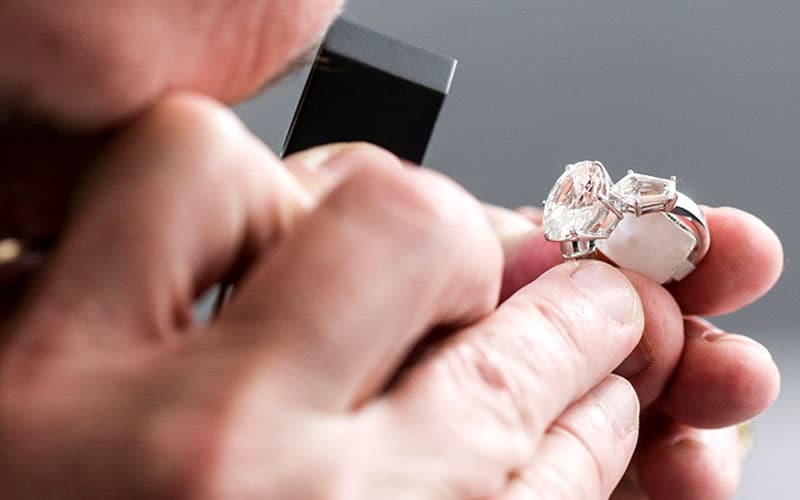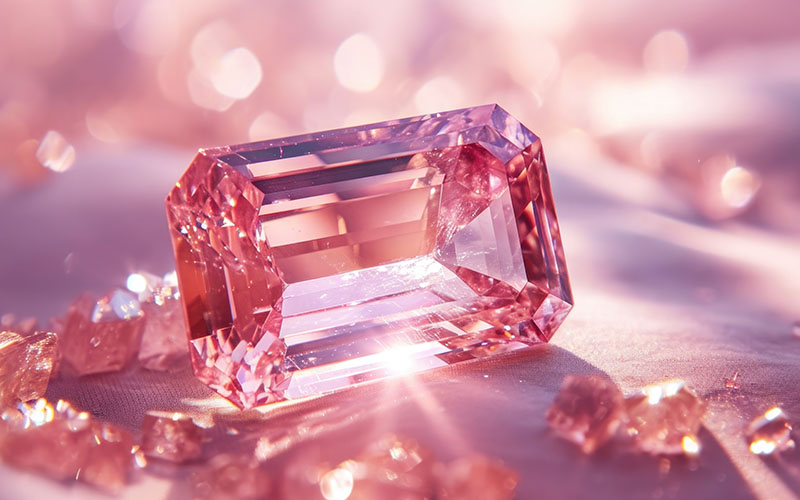“Is that a real diamond?”
So many folks have a similar story.
- “I found this loose diamond in an old jewelry box…
- “I found this diamond earring on the sidewalk…
- “So I bought this big diamond ring on the cheap at a garage sale…
“But is it real?”
As long as you don’t know the answer that possibility of hidden treasure still exists, right? And, believe it or not, there are people who like to presume they’re wearing big money but don’t actually want that theory tested. That’s harmless until it leads to misunderstandings. For example, when that “huge diamond ring” your great aunt always boasted about gets inherited and … it turns out the center stone was never a diamond after all. It was a diamond simulant.
What is a diamond simulant?
A diamond simulant or imitation diamond is an object or material with gemological characteristics similar to those of a diamond.

Note: The term diamond simulant should not be confused with the term synthetic diamond, which refers to laboratory-grown diamonds.
Testing? Testing?
Google turns up dozens of ‘quick-tests’ to determine whether you have a diamond or a simulant on your hands: Loupe-tests, fog-tests, sparkle-tests, even sandpaper-tests (no!)… Some of these have a sound basis but none are 100% reliable, and no single test covers the full historical range of cubic-zirconia, Moissanite, zircon, rutile, YAG, GGG, glass, spinel, white-sapphire, strontium-titanate, quartz and topaz.
Like medicine, the internet is a great resource for research, but actual examination and prescription is best done by a professional.
Spoiler first
The best way to authenticate your diamond is to have it analyzed by a professional gemologist or send it to a gemological institution capable of full analysis. We’ll circle back to that at the end.
Key differences
Refraction
Diamond is singly-refractive meaning a ray of light passing through the medium is slowed, but otherwise unaffected. CZ, glass (rhinestone), spinel, strontium-titanite, YAG and GGG are also singly-refractive whereas white-sapphire, rutile, Moissanite, quartz, zircon and topaz have double-refraction.

To learn more about refraction and isotropic vs anisotropic light behavior, check out my previous article about the famous “red-trickster.”
Hardness
Most simulants don’t come close to diamonds in hardness. They scratch and chip more easily. Only white-sapphire and Moissanite approach diamond, coming in at 9.- on the Mohs scale. Diamond’s rating of 10 is around 10x harder than that, even.

Color
Most natural diamonds have at least a slight hint of yellow or brown. By comparison, most simulants are colorless. If they were graded on the diamond color grading scale most would receive D. Or even ‘super-D.’ If you place a simulant next to a diamond it will usually look whiter.
Clarity
Natural diamonds typically have natural characteristics such as pinpoints crystals and feathers. Simulants do not usually have these natural inclusions.
Dispersion & fire
Diamond has a refractive index that sits in the middle of most simulants. Moissanite and Rutile can seem ‘oversaturated’ with colored flashes by comparison, whereas most other simulants have lower R.I. Experienced diamond lovers frequently spot simulants based simply on how they break light down differently.

By the way, fire & dispersion are not the same thing. You can learn more about that in a previous article here.
Value
And… If you spot a big, bright, flawless whopper of a stone with a price-tag of a few hundred dollars – it’s a pretty good sign you’re not buying a diamond.
It’s all good
There’s nothing wrong with buying a diamond simulant, as long as you’re fully informed as to what it is (and what it’s not).
Just be aware that there are no reliable do-it-yourself tests which will reveal whether you have a diamond or some other material. The best way to authenticate your diamond is to have it analyzed by a professional gemologist or send it to a gemological institution capable of full analysis.
The International Gemological Institute has locations around the world and have the expertise and technology to distinguish between diamond simulants or imitations, natural diamonds and laboratory grown diamonds. If you don’t have a grading report for a stone and would like one, make contact with your nearest IGI location.





